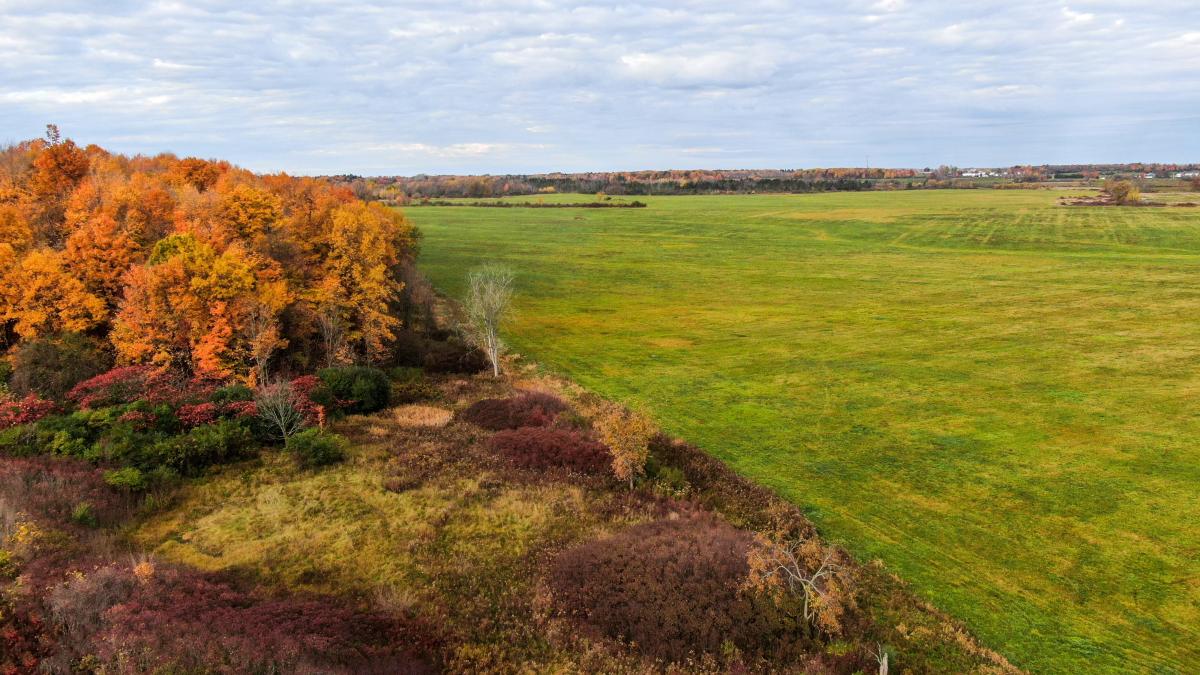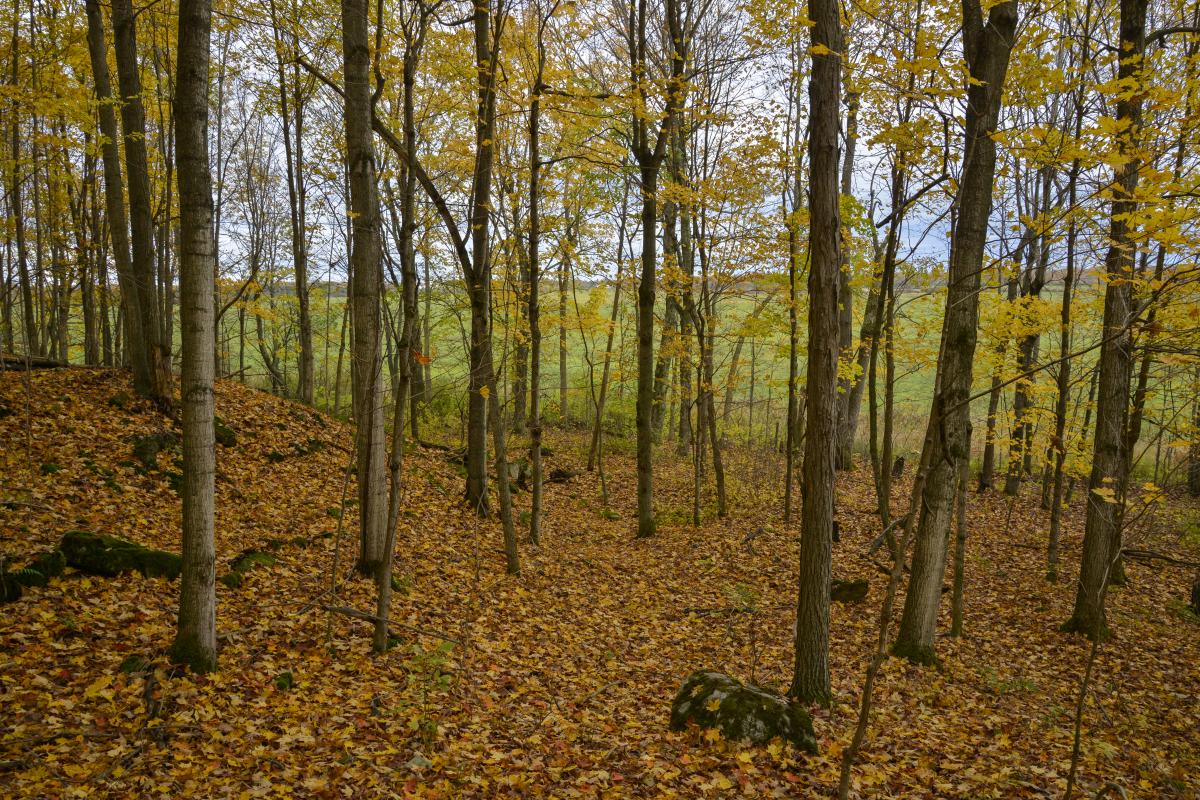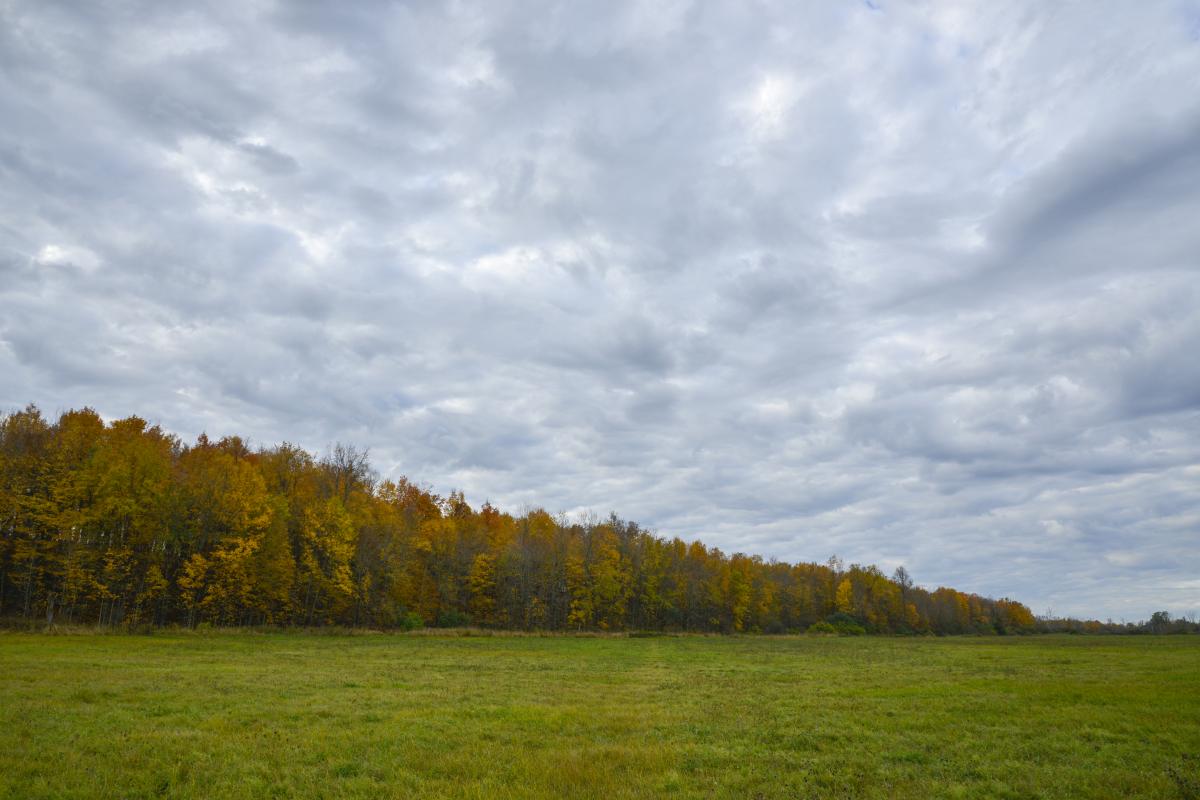Mesmerizing. The one word that fittingly describes the gentle waving dance of a rolling meadow in the midday breeze. One can’t help but gaze in awe at this simple, breathtaking phenomenon. From a higher vantage, the swaying grasses seem to synchronize across the land, as if the entire ground is alive and rippling with life. That’s because these hayfields are alive, and teeming with diverse and rare lifeforms, from the soil microbes and voles underfoot to the raptor-filled airspace above.
These beautiful and vibrant grasslands are one of the fastest disappearing habitats in the world. In the St. Lawrence River Valley, these grasslands have supported a bucolic way of life for well over a century. But as family farms grow fewer, their hayfields, pastures and meadows are falling victim to fragmentation, residential development, conversion to large-scale solar farms, and simple abandonment
(forest succession).
In an effort to protect one of the larger continuous grasslands in the region, TILT recently acquired and conserved the 317-acre Delano property on County Route 3, in the Towns of Orleans and Alexandria. Over 240-acres of this expansive property are in open field habitat, supporting rare grassland species such as savannah sparrow, vesper sparrow, bobolink, and northern harrier, as well as countless pollinators and small mammals. Notably, this single property contains almost two percent of the entire 26 square mile watershed drainage area of Mullet Creek! It features over half a mile of the meandering creek bed, which sustains a spectacular assortment of fish and other aquatic wildlife.
“The Delano tract is a real gem,” said Tim Boycott, a graduate research assistant at Cornell University, studying grassland birds in working lands across the State. “Its broadness has a way of making you feel small on the landscape. It also falls within an important Grassland Bird Conservation Center.” The 2022 NYSDEC Grassland Bird Strategy identifies Jefferson County as its largest Grassland
Bird Conservation Center, accounting for over 60% of the critical grassland acreage identified in the entire state.
Management and Mitigation
The Delano property’s deep-rooted meadow acts as a sponge, absorbing rainwater while stabilizing the upland soils and preventing erosion. The extensive root systems help bind soil particles together, preventing sediment from clouding the waters that flow into Fishers Landing. The riparian vegetation captures excess nutrients, such as nitrogen and phosphorus, which can lead to water pollution and harmful algal blooms. The grasses help filter out these nutrients, ultimately improving the water quality of Mullet Creek, but also the broader St. Lawrence River. The hayfields are also drought-tolerant, providing for sustainable agricultural production in the face of today’s more variable climate.
In that light, the grasses store sizable quantities of carbon in the soil, helping to mitigate climate change by reducing greenhouse gas concentrations. Moving forward, the Land Trust will enroll the property in a rotational mowing regimen, with cutting occurring after August 1st to ensure successful fledging of the many grassland nesting species that breed on the Delano property. TILT’s goal is to have this property serve as a safe-haven for those species that have been forced to relocate from the nearby fields that have recently been converted to large-scale solar. This management will help the North Country maintain its role as the leading producer of hay and silage in New York State.
TILT’s conservation of the Delano property was supported by the Great Lakes Restoration Initiative’s Joint Venture Habitat Restoration and Protection program, and the New York State Department of Environmental Conservation’s Water Quality Improvement Project program. David Lucas, TILT Board President said, "Though these programs have different purposes, their common support speaks volumes to the Delano property’s holistic and multi-functional nature. Now future generations will have the ability to enjoy its open space and wildlife for years to come."






